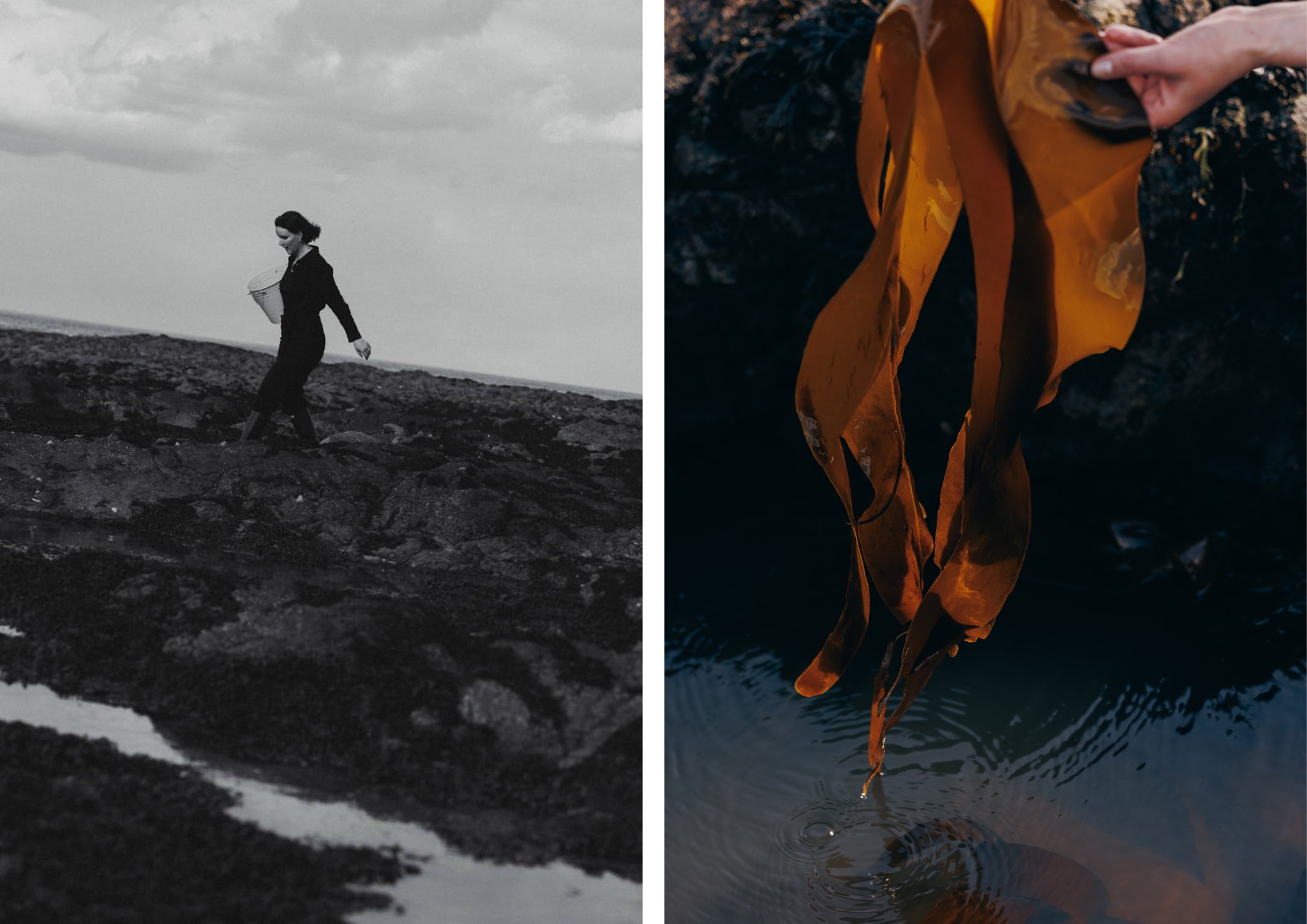
It’s a cold and cloudy day on the coast of the North Sea; water warms under weak sunlight as a fool’s spring comes over Edinburgh. Textile artist Jasmine Linington has ventured down to her local beach, Yellowcraig, to explore the marine algae the low tide has unveiled. Wellies on, with a bucket and a pair of scissors in hand, a small-scale seaweed harvesting licence (to ensure the practice remains sustainable) and her dog in tow, Jasmine scours the waterline for bladderwrack, pink cock’s comb, kelp, gutweed and more, all unfurling in the light under the shallow, retreating waves.
The spring and summer months are best for collecting the delicate cock’s comb and sea beech seaweeds, which, when pressed, bleed a delicate stream of pink hues in a natural watercolour effect. However, the calm of the beach environment all year round inspires and informs Jasmine’s art. “How and when I create is driven by my mood, the tides, and the seasons. There is something so peaceful and magical about being on your own, surrounded by an empty coastline on a cold but light day. These moments are my favourite.”
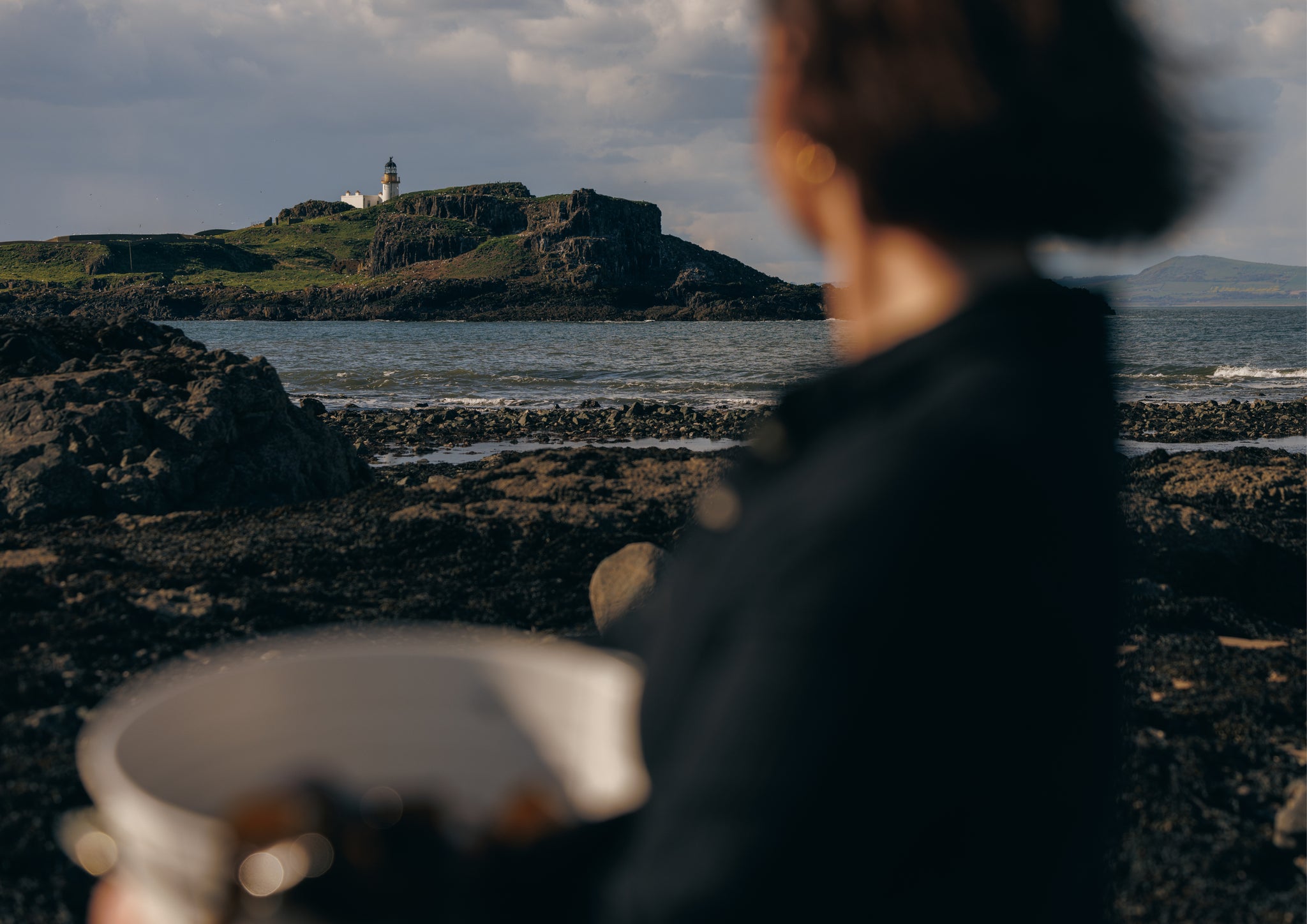
Jasmine foregrounds the marine plant in every aspect of her work, her art exploring every possibility of the natural material. She makes leather-like discs of kelp sequins and turns seaweed beads into jewellery. SeaCell fibre, a blend of seaweed and eucalyptus, is used to create embroidered fabrics and cushions, while the algae is hand-pressed to create prints. As the ebbing tides of the sea retreat along the sand, leaving sprays of seafoam and silver whispers of water in its wake, Jasmine’s creative work begins. From the shape of sprouting bladderwracks buds informing the shape of the kelp sequins, to the deep green shine of capers captured in the beads, Jasmine raises the natural beauty of sea flora above water.
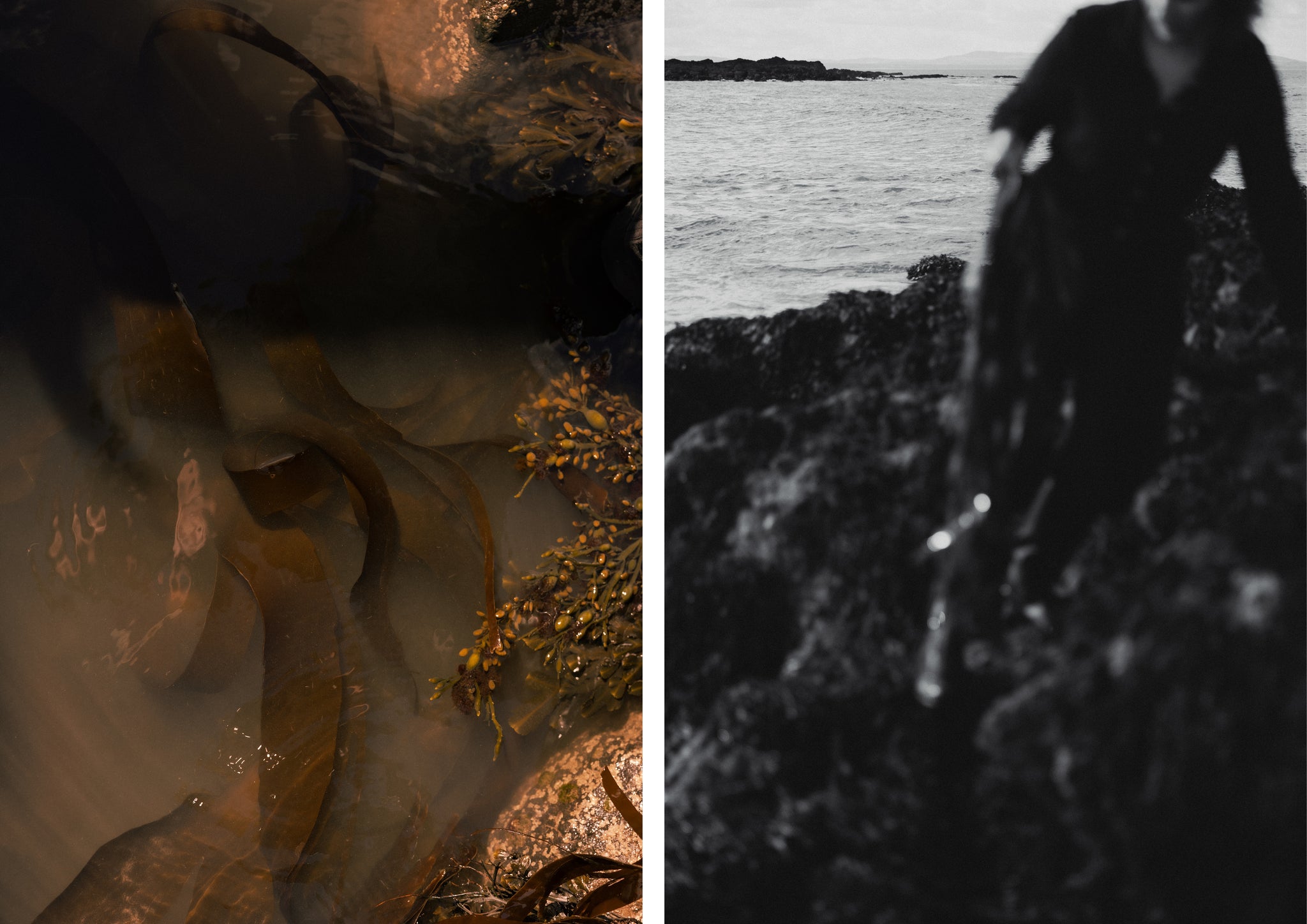
“A few years ago, I didn’t know anything about seaweed, other than how it freaked me out when it touched my leg in the sea,” Jasmine says. “That’s as close as I ever got to it. In fact, I tried to avoid it. I had no idea how much creativity seaweed could offer me or how far I could explore it as a material.” For Jasmine, it wasn’t until 2014 when a project for her BA Textiles course propelled the artist to the beach, seeking inspiration. “I remember looking down and seeing all the rich and varying textures and colours of seaweed. It was during one of those moments that it became of interest as a material, and as visual inspiration, too. It has carried me through my artistic work ever since.”

Jasmine lives and works in the heart of Edinburgh, having returned after a stint away following her studies at the university. In a light and airy garden studio, the production begins. “I’ve always been interested in textures and working with my hands,” she says. “Making textiles from seaweed is a tactile process.” Just like the sea from which the algae is harvested, there is a rhythm to Jasmine’s creative labour. The smell of salt lingers in the air as each piece of seaweed is hung to dry or pressed for two weeks to eliminate moisture. Meanwhile, steel pans boil cream-coloured SeaCell fibre in preparation for the material to be dyed using natural dyes. From harvesting at the beach to the final piece, the end-to-end process can take anywhere between three weeks to two months. And then, the whole process repeats; the craft tidal-like in its flow.
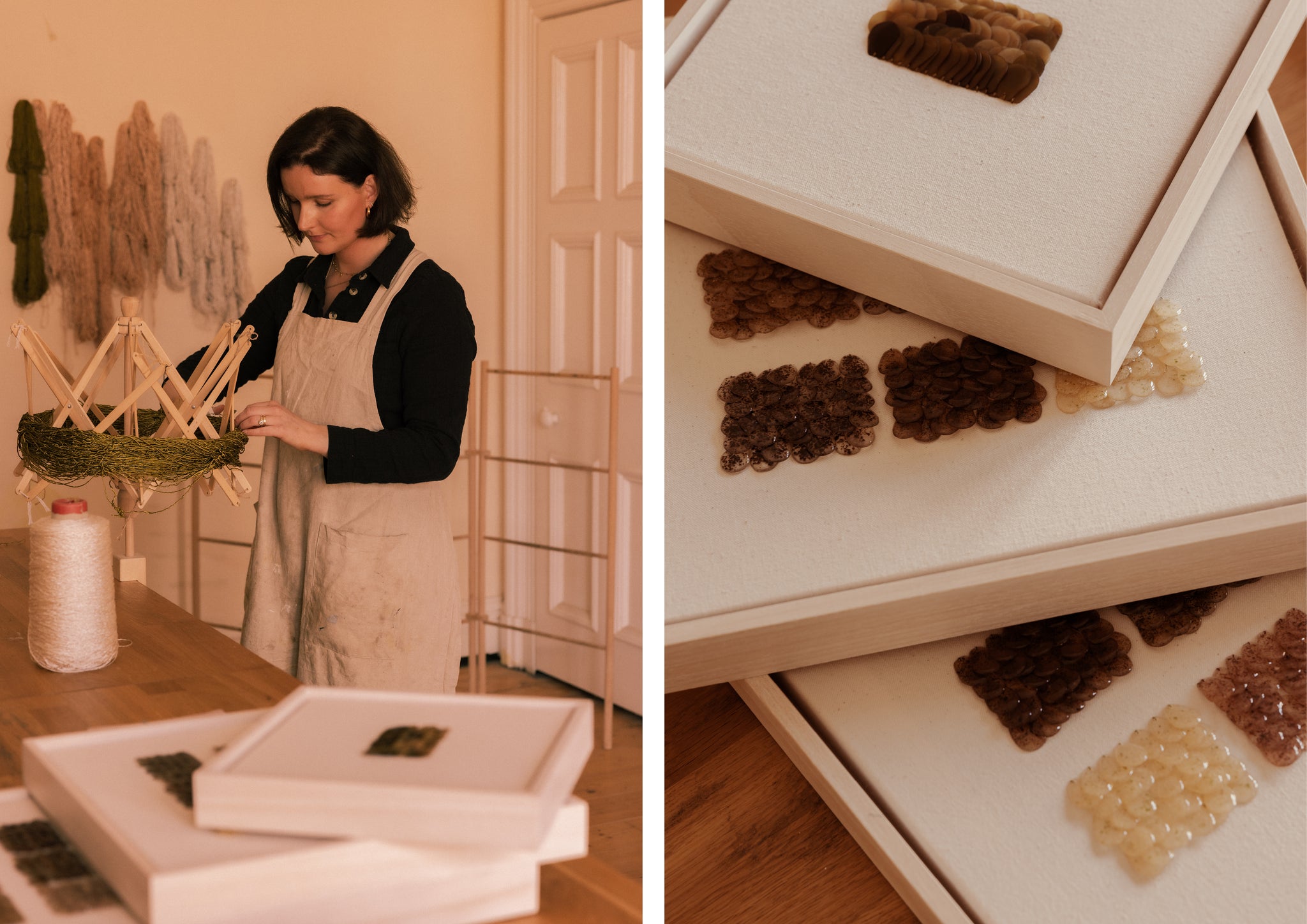
Once the kelp is ready to work with, it is laser cut to make the kelp sequins and then hand-sewn onto fabric for wall hangings. Growing up by the coast in Cornwall and Kent, each sensory experience of the sea, from sound to light, is celebrated in Jasmine’s work, and so the the kelp sequins take the form of shimmering waves across the canvas. The seaweed jewellery, however, was unplanned, born from the powder - “a field of colours” - left over after experiments with crushing dried seaweed to use as natural dyes didn’t work as well as Jasmine hoped. “I’m always mindful of waste, meaning one project often leads into a different one. It’s the unexpected part that I enjoy” she explains. There’s a free-flowing creativity trickling through each stage of her mindful, small-scale work. From samphire-greens to purple dulse “I began to appreciate all the different shades of seaweed and thought jewellery was a great way to showcase its incredible variety of natural colours.”
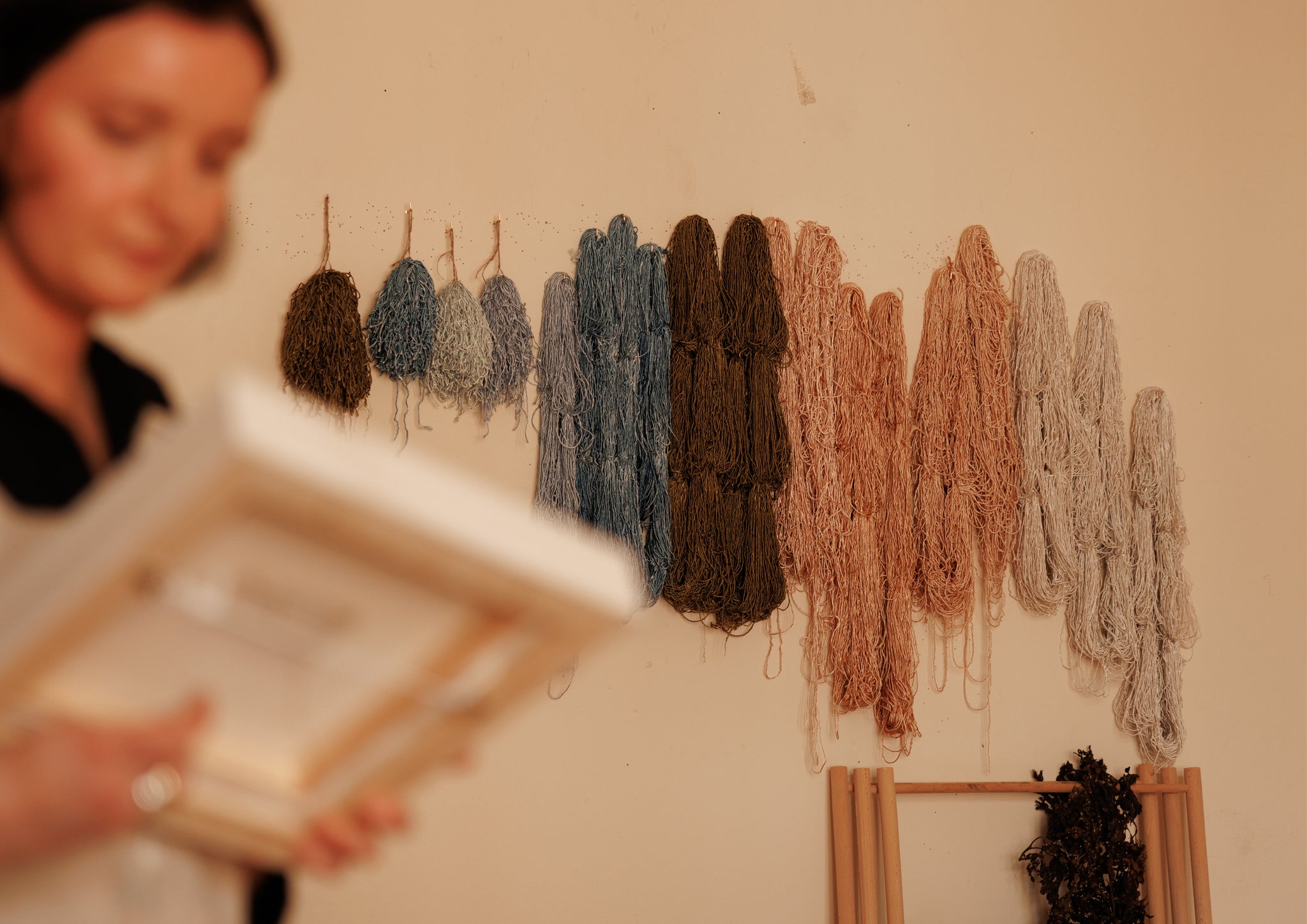
This gentle process of transformations in Jasmine’s textile work continues even after the final product has been made and hung to enjoy. “The beauty of kelp is that its colour changes and matures over time where it meets natural light.” From this, olive greens emerge from reddish maroons, bringing a snapshot of the underwater emporium of colours above the waves. “With the changing colours, you can start to see the different species of the kelp in the textile pieces. It’s a beautiful process that keeps delivering as years go by.” Currently, Jasmine’s art practice spotlights nine out of approximately 10,700 species of seaweed. “It's a work in progress, I am still learning,” she says. “There's still so much to discover. Working with seaweed is eternally engaging.”
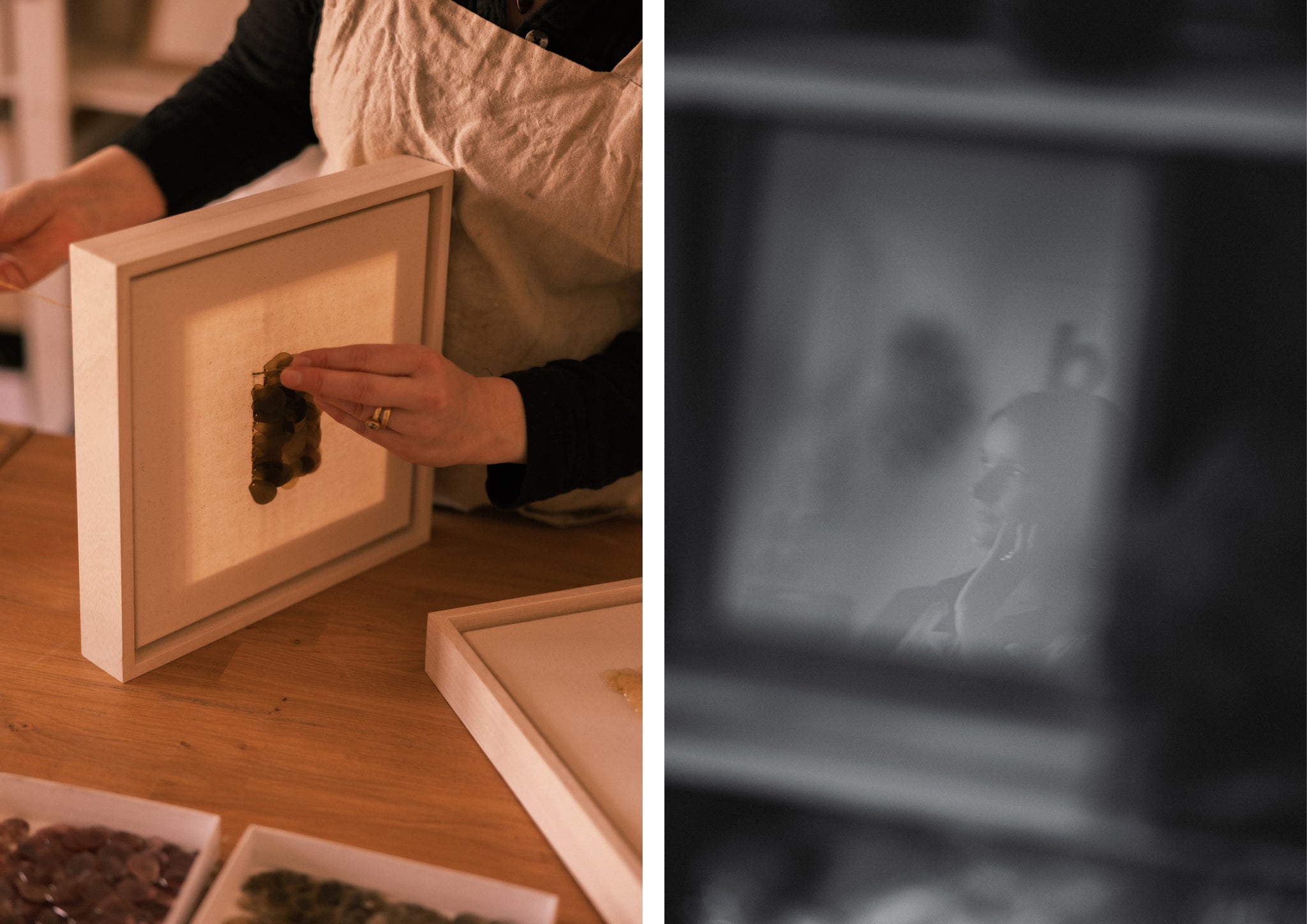
Recently, Jasmine’s work was selected to be exhibited at craft and design fair Collect with Craft Scotland, spotlighting Scotland-based makers and their handmade practices. Though her work can be seen across many Edinburgh touchpoints, including at the St James Centres' New Eidyn showhome apartment, designed by interior design studio Hudson & Mercer and the gallery for Scottish Craft, Bard, Jasmine’s craft is mindful, resisting trends and instead moving forward organically with the ebb and flow of the tides.
Words by Ella Mansell.
Photography by Richard Gaston.
Add a comment
3 comments